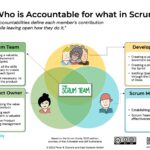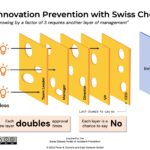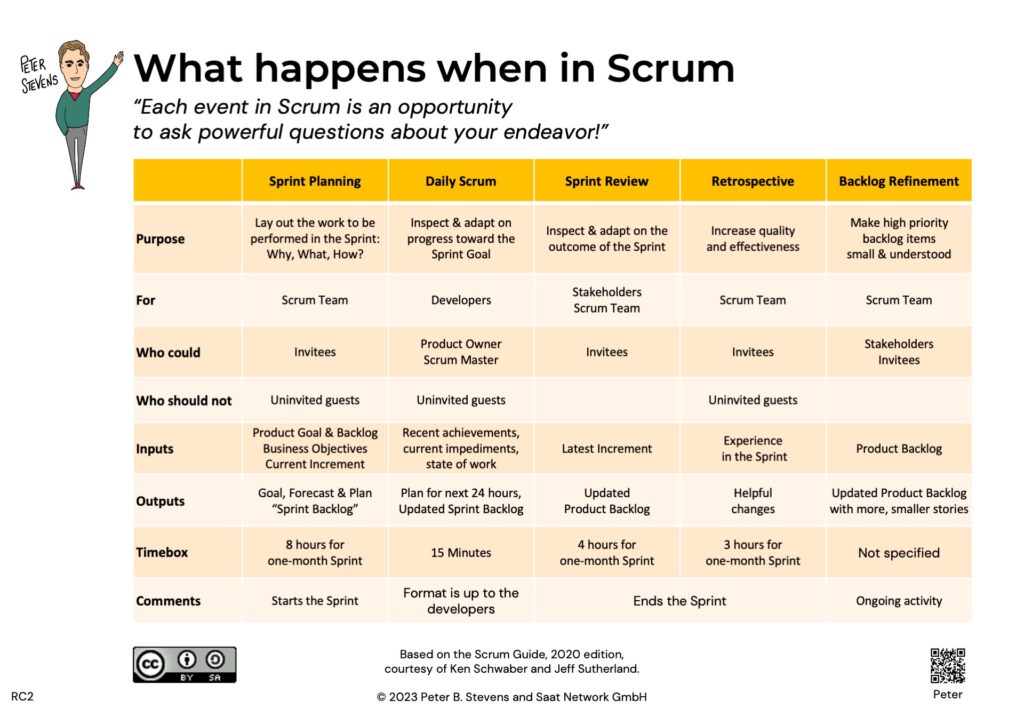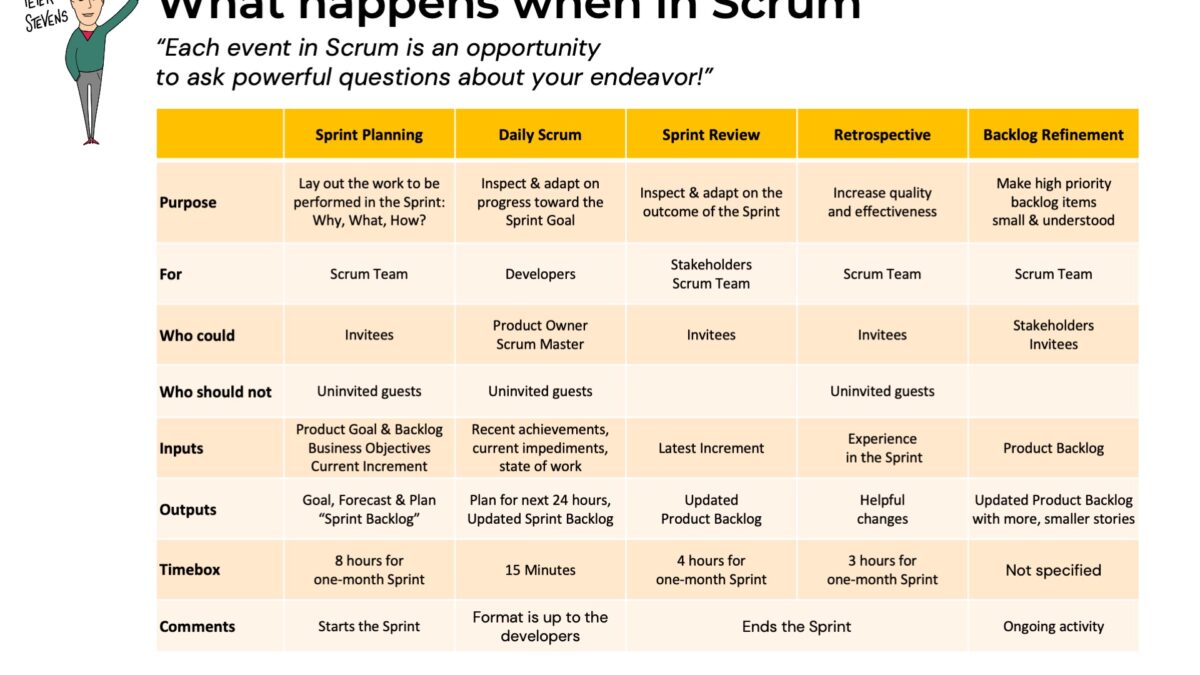
Who is Accountable for what in Scrum?
04-09-2023
In search of Agile Management
11-09-2023With all the controversial attempts to create Scrum “cheat sheets,” I thought it was time to create one that is true to the definition of Scrum. In this infographic/cheat-sheet, I have stayed as possible to the Scrum Guide.

Sprint Planning
The Sprint starts with Sprint Planning. The purpose is to lay out the work to be performed in the Sprint. It covers three topics: why, what & how? The event is for the Scrum Team, who can invite anyone else whose presence will be helpful. Take care, however, before inviting influential stakeholders.
The key inputs are the Product Backlog and the Increment produced in the previous Sprint. Sprint Planning produces the Sprint Goal, a list of selected items from backlog (the “forecast”), and a plan for converting those items into finished (“Done”) functionality. Together, these are called the Sprint Backlog.
Sprint Planning is time-boxed to 8 hours for a one-month sprint and is usually shortened for shorter sprints (as are the other events, except for the Daily Scrum).
Editor’s note: A time-box is an upper limit, not a guideline on how long something should take.
Daily Scrum
The purpose of the Daily Scrum is to inspect & adapt on progress toward the Sprint Goal. In other words, figure out who is going to do what today. It is for the Developers. The Product Owner and Scrum Master can attend if it is helpful. Beware of uninvited guests.
The Developers decide on the format. Inputs include recent achievements, current impediments, and the state of work. The goal is a plan for next 24 hours, which updates the Sprint Backlog. Time-box is strictly limited to 15 minutes.
Sprint Review
The purpose of the Sprint Review is to inspect & adapt on the outcome of the Sprint, that is the latest Product Increment. The Sprint Review is held by the Scrum Team for the Stakeholders. The feedback from the stakeholders will likely update the Product Backlog and may influence the planning for the next sprint. The timebox is 4 hours for a one-month sprint.
Retrospective
The purpose of the Retrospective is to increase quality and effectiveness of Scrum Team. The event is for the Scrum Team and anyone they choose to invite. The team may want to discuss sensitive topics, so uninvited guests are decidedly unhelpful!
The key input is the team’s experience in the Sprint. The goal is to identify helpful changes moving forward. These may even go directly into the sprint backlog for the next sprint. The retrospective is time-boxed to 3 hours for a one-month Sprint.
The Sprint Review and Retrospective end the Sprint.
Backlog Refinement
The purpose of Backlog Refinement is to make high priority backlog items small & understood, that is ready for bring into the sprint. It is an ongoing activity, not an event. Currently, Scrum does not time-box this activity. The Developers decided when and how. The previous edition of the Scrum Guide noted that backlog refinement “usually consumes no more than 10% of the capacity of the [Developers].”
The event is by and for the Scrum Team, but Stakeholders or anybody else whose presence will be helpful, like subject matter experts, users, clients, and customers, etc. can be invited.
The input is the Product Backlog and output is an updated Product Backlog with more and smaller backlog items.





